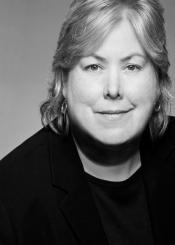Originally posted by Jordan Fujiwara.
 When I asked Catherine Phoenix why she had decided to take an MBA, especially after working for over 20 years managing non-profit organizations, she told me, “I wanted to make the shift into public and private sectors, and I was looking for new challenges.” Originally from Stouffville, Ontario, Catherine has taken the first steps towards making that shift with the Corporate Residency MBA program. She has a BA from the University of Guelph and a Bachelor’s of Fine Arts from the Nova Scotia College of Art and Design.
When I asked Catherine Phoenix why she had decided to take an MBA, especially after working for over 20 years managing non-profit organizations, she told me, “I wanted to make the shift into public and private sectors, and I was looking for new challenges.” Originally from Stouffville, Ontario, Catherine has taken the first steps towards making that shift with the Corporate Residency MBA program. She has a BA from the University of Guelph and a Bachelor’s of Fine Arts from the Nova Scotia College of Art and Design.
We’ve heard a lot of praise for the program from the crowd that has been fresh (or nearly fresh) from their undergrad degrees, but what about someone like Catherine, who has had a significant career and is shifting gears back into the academic field? “I was looking to come in to a program that was intimate and small in scale. The instruction has been excellent, and I appreciate the ‘lock-step’ dimension where we get the chance to work with a certain group for a period of time then move on. My feelings are absolutely positive; I have no qualms about the ‘bang for the buck’ here!”
While she has enjoyed the experience so far, she advises (as others have) interested parties to take note of the intensity of the coursework: “I didn’t think it would be so immersive! I was surprised by the format, the 9-5 every single week! The thing that sticks out in my mind is that ‘I’ve survived,’” she laughs. “When you’ve been in the workforce for a long time you’re not used to the mindset of studying 14 hours a day. You learn differently than when you’re 22, and I had a different idea of how the days would unfold. It has been exciting to get back on the horse and get to it!”
For her residency, Catherine was hired by Transport Canada as a Special Project Advisor in the Marine Safety Atlantic Department. Her primary task is a ‘realignment of the branch’ to switch to a program focus from a geographic delivery focus. Separate offices in the department are integrating and culture and procedures are changing because of it. Naturally, change is not the easiest thing to deal with in a large organization, especially not one of this scale. Catherine’s job is to spearhead the phases of the realignment: liaise between sections, design communications strategies to facilitate discussion, develop tools to support organizational development, coach and make the overall process as smooth as possible. “My role is as a consultant. I have a lot of talks and interviews with people in order to get to know the cuture. There is a balance between the mechanical aspects of organizational change and the soft-side that lies with people. I make myself available to various working groups as they try to sort out their processes; this involves listening a lot. I find resources and bring them back… I broker ‘deals’ between people and help find compromise when there is conflict – and work to make sure they’re hearing each other. The most exciting thing that has happened to me relates to seeing the transition in how people approach the change: to see them embrace it instead of being aloof. A lot of trust and bridges have been built.”
Sounds like she’s handled the work-to-school (and back again) transition pretty well to me! In her words: “I was aware of the value of an MBA dropping due to the financial meltdown, but for me the value of an education never drops. I knew I was in the right place with a program committed to exploring business ethics and corporate social responsibility in combination with the hard skills. You will get an excellent experience out of the Dal MBA if you, too, know you’re in the right place. I think unique people are attracted to the program, and that’s half the fun for me! People are very generous and they BRING it, they’re giving it their all, there’s no sense of holding back. In other programs that might not happen.”
She could very well be right. See you next week!